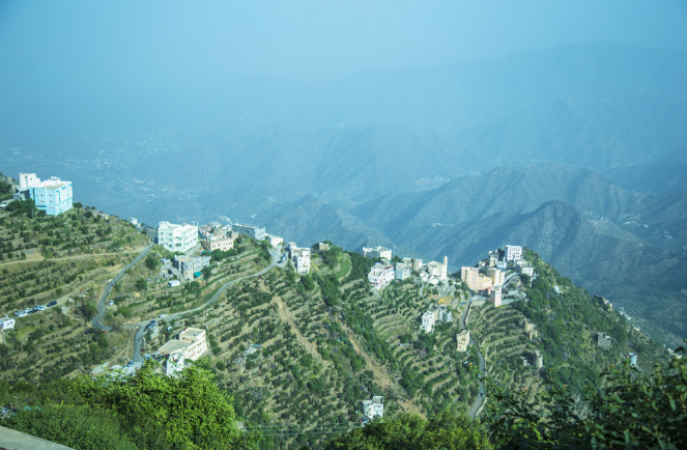
RIYADH: On the eve of the crucial summit on sustainability, Saudi Arabia has launched a massive campaign to raise environmental awareness.
As part of its effort to take the lead in addressing environmental problems facing the world, the Kingdom has provided comprehensive documentation of its climb to the MIT Technology Review's Green Future Index 2022.
Saudi Arabia ranks tenth. The increase in this year's list comes after Crown Prince Mohammed bin Salman's programs and initiatives, notably the Middle East and Saudi Green Initiative and the creation of royal natural reserves to promote vegetation in Saudi Arabia.
Also Read: Today's Petrol-Diesel prices released, know the price in your city
The SGI, MGI, and the circular carbon economy approach, which aims to move forward, are key pillars for developing a roadmap for realizing the Kingdom's ambitious climate objectives aimed at achieving many of the objectives of Saudi Vision 2030.
At the first SGI Forum in October 2021, the first batch of over 60 new initiatives were announced with an investment of over SR700 billion.
Next week, in conjunction with COP27, the second MGI summit and the SGI Forum will be held in Sharm el-Sheikh, Egypt, with the theme "From ambition to action".
The MGI Summit and SGI Forum are scheduled for November 7 and 11-12 respectively.
The SGI unites all climate action initiatives within the Kingdom to achieve three key goals: reduction of carbon emissions by 278 mtpa by 2030; planting 10 billion trees across Saudi Arabia; and to preserve 30% of the state's land and sea. This ambitious scheme aims to pave the way for net-zero. According to the Green Future Index report, the Kingdom is ranked 19th overall, with an increase of 27 places in the carbon emissions column.
The Kingdom's announcement that it will increase its nationally set contribution to carbon-emissions target to 278 mtpa by 2030 - more than double the 133 mpta announced in 2015 - spurred growth. The announcement of the Kingdom's goal of achieving net-zero by 2060 helped the country move forward.
This ambitious goal will be met through the application of the CCE approach, in line with the Kingdom's development plans, economic diversification initiatives, and in line with the "dynamic baseline" outlined in the Kingdom's NDC.
Also Read: UPI transactions rise 7.7 pcto 730 Cr in October
Ensuring that the Kingdom maintains and strengthens its leading role in the security and stability of the world's energy markets. The success of this ambitious target will depend on the maturity and availability of the required technologies.
A National Program for Circular Economy, which was endorsed by the G20 leaders during the Kingdom's summit presidency in 2020, has also been launched by the Kingdom in this regard.
The Kingdom moved up 12 places to place 12 in the Energy Transition Pillar and first in the Renewable Energy Growth Indicator of the same pillar. The Kingdom's announcement that it would increase the proportion of renewable energy in the energy mix used to produce electricity to 50% by 2030 served as an impetus for this development.
It came in at number 26 worldwide in the Green Society Pillar, the third column of the Kingdom Index. Saudi Energy Efficiency Center, the introduction of more than 27 specifications and regulations to improve the energy efficiency of machinery and buildings.
Some of the most notable are the adoption of the Saudi Corporate Average Fuel Economy Standard (Saudi CAFE), the incorporation of the Tarshid Company to carry out energy efficiency projects in government buildings and facilities, and the installation of over 10 million smart electricity meters. initiative in this regard.
The development of innovative projects within the Carbon Circular Economy National Program, expanding the use of hydrogen application, and innovation in the energy sector have all helped the Kingdom compete with the rest of the world in this area.
The update of its NDCs, the announcement of a Carbon Capture, Utilization, and Storage (CCUS) hub, and the establishment of the Riyadh Voluntary Exchange Platform for Offsets and Carbon Credits within the Middle East and North Africa.
Also Read: Saudi Arabia claims a $40 billion budget surplus for the first nine months of 2022
The region's main platform and destination for businesses and regions, all aimed at reducing carbon emissions, all helped the Kingdom advance 13 positions in the climate policy column.
In terms of green finance, the Kingdom has put in place a comprehensive framework to help achieve its goal of being net-zero by 2060. The framework will enable access to international eco-friendly credit markets and is in line with the Paris Agreement and the CCE approach.
The Green Future Index, first introduced in 2021, is an annual ranking of 76 countries based on their potential to create a sustainable, low-emissions future.
Additionally, it assesses how much innovation, policy and financial support for renewable energy is being used to move clean energy to industry, agriculture and society in these economies.
Carbon Emissions, Energy Transition, Green Society, Clean Innovation, and Climate Policy make up the five pillars of the Green Future Index. These pillars are used to evaluate countries, and each one receives a general ranking. There are additional indicators within each pillar that rank nations as well.